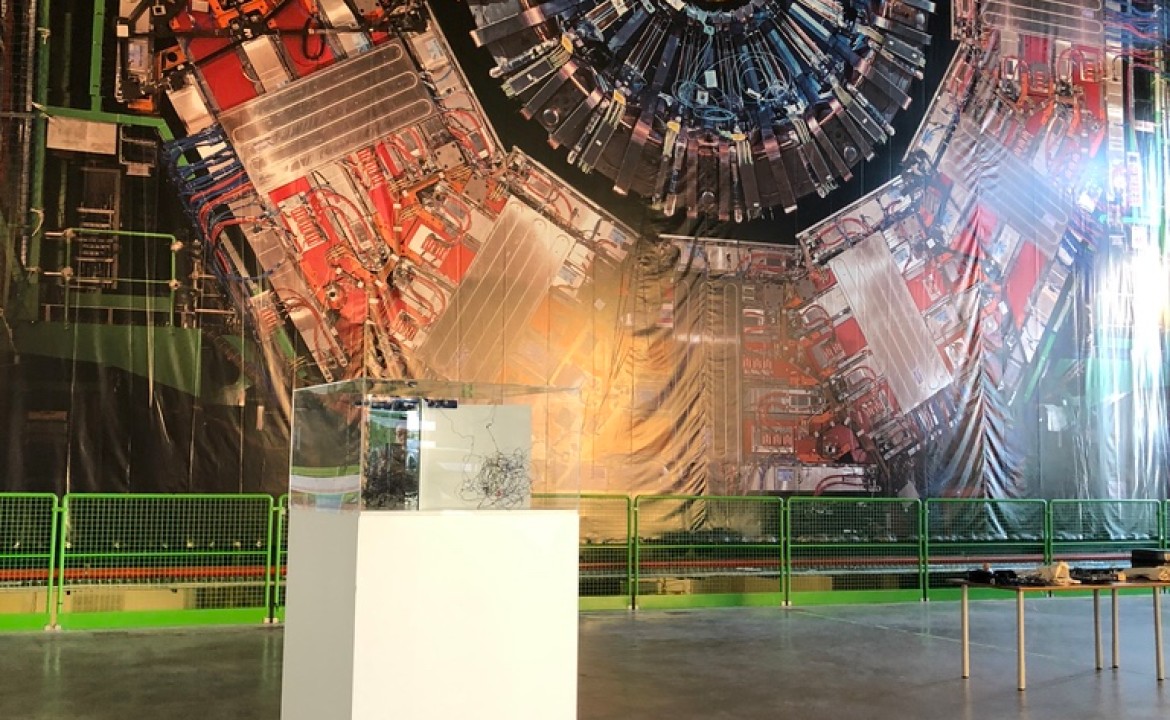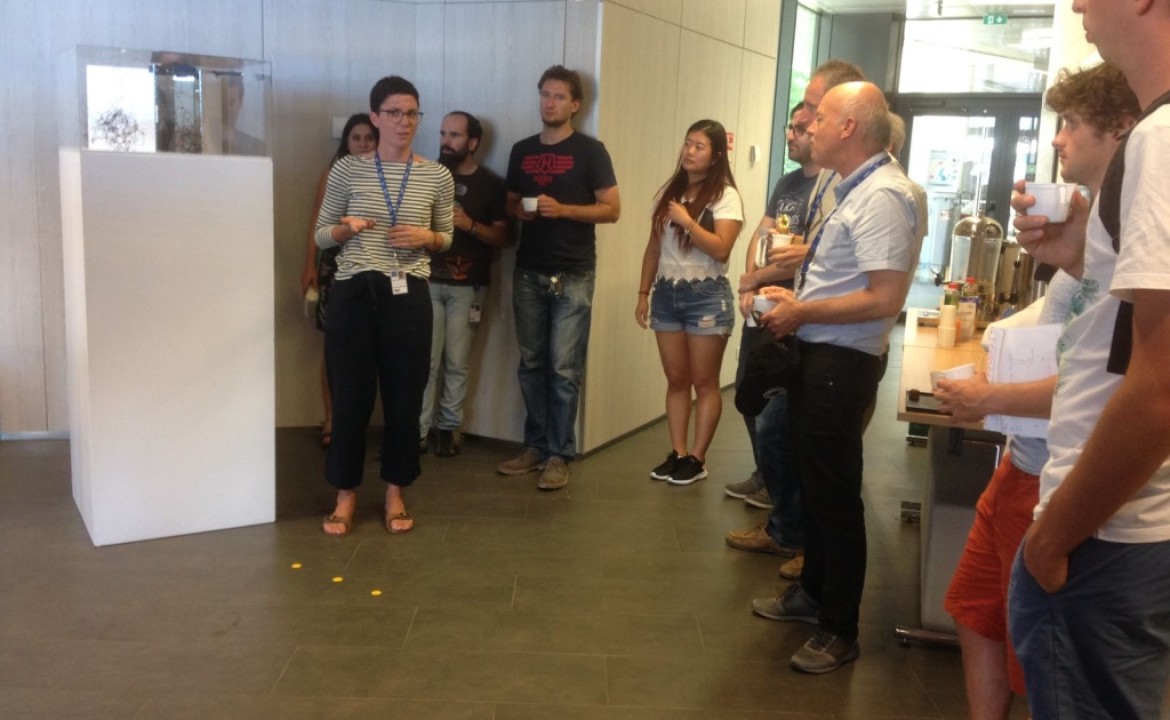At the summer festival, Denise – together with other artists of the art@CMS programme – enjoyed interesting talks and discussions about her installation and "Filterbubble" as well as the atmosphere within 700 guests.
In collaboration with art@CMS, she is working together with Michael Hoch and by the end of 2018, another single-exhibition with Denise´s work is expected. She is very grateful about this cooperation and considers a combination with her masters diploma.
www.deniseschellmann.com
www.facebook.com/deniseschellmann
https://arts.cern/
https://home.cern
About CMS
The Large Hadron Collider (LHC) at CERN smashes protons together at close to the speed of light with seven times the energy
of the most powerful accelerators built up to now. Some of the collision energy is turned into mass, creating new particles
which are observed in the Compact Muon Solenoid (CMS) particle detector. CMS data is analysed by scientists around the world
to build up a picture of what happened at the heart of the collision. This will help us answer questions such as: "what is
the Universe really made of and what forces act within it?" and "what gives everything substance?" Such research increases
our basic understanding and may also spark new technologies that change the world we live in.
What is CMS
The LHC smashes groups of protons together at close to the speed of light: 40 million times per second and with seven times
the energy of the most powerful accelerators built up to now. Many of these will just be glancing blows but some will be head
on collisions and very energetic. When this happens some of the energy of the collision is turned into mass and previously
unobserved, short-lived particles – which could give clues about how Nature behaves at a fundamental level - fly out and into
the detector. CMS is a particle detector that is designed to see a wide range of particles and phenomena produced in high-energy
collisions in the LHC. Like a cylindrical onion, different layers of detectors measure the different particles, and use this
key data to build up a picture of events at the heart of the collision.
Scientists then use this data to search for new phenomena that will help to answer questions such as: What is the Universe
really made of and what forces act within it? And what gives everything substance? CMS will also measure the properties of
previously discovered particles with unprecedented precision, and be on the lookout for completely new, unpredicted phenomena.
Fact Box
-
Alumni
- Denise Schellmann (Works)
-
Contributors
- Michael Hoch (Project collaborator)
-
Institutions
- CERN – European Organization for Nuclear Research (Project collaborator)
- art@CMS (Project collaborator)


